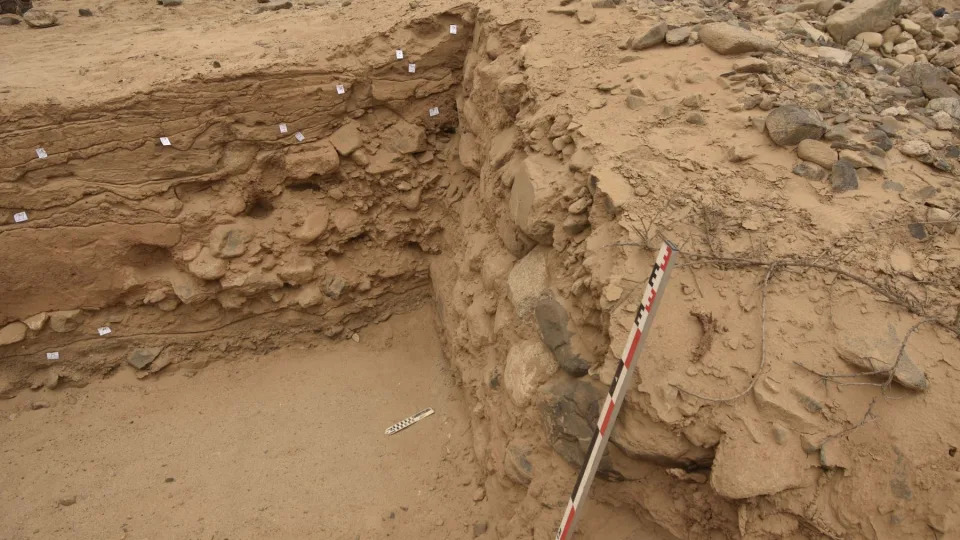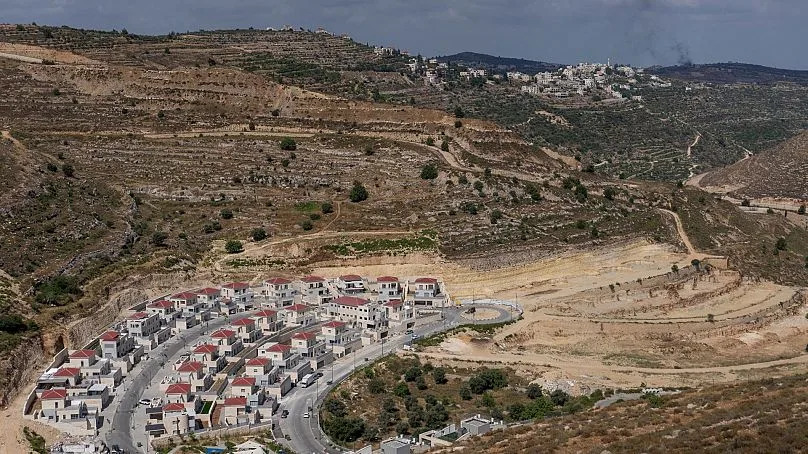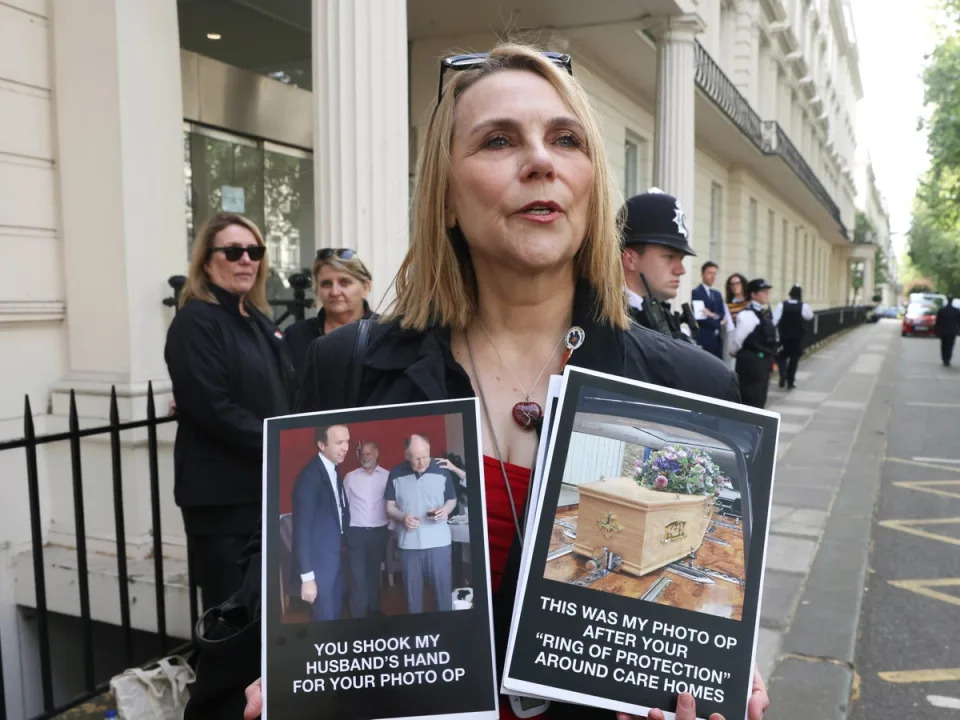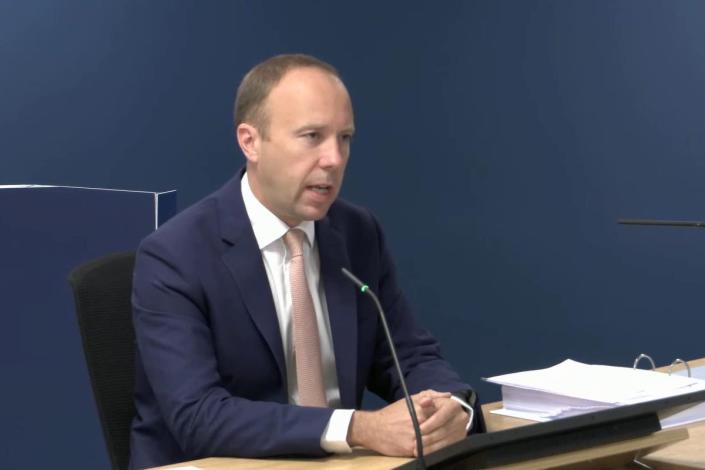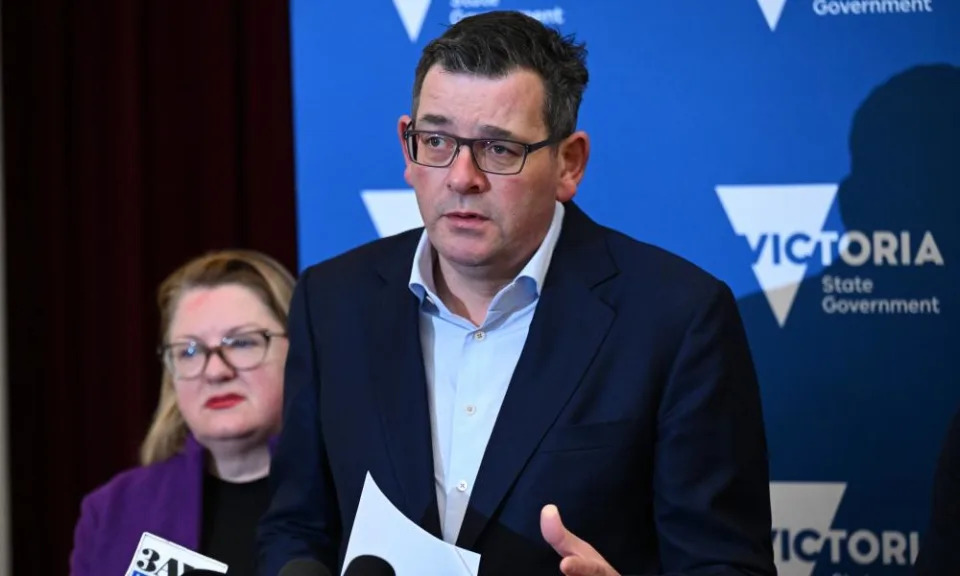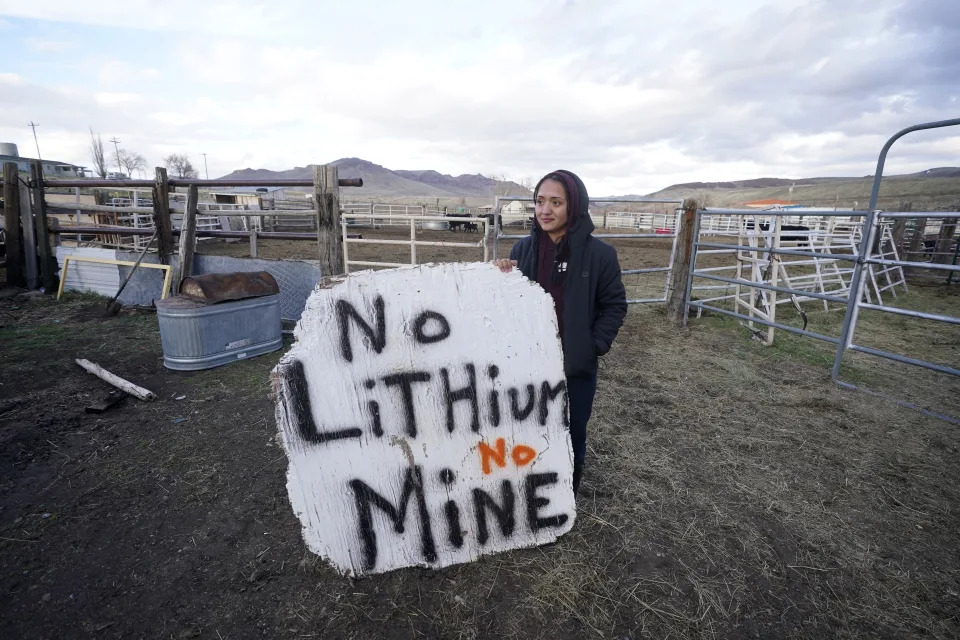What is a heat dome? An atmospheric scientist explains the weather phenomenon baking Texas and forecast to expand
William Gallus, Professor of Atmospheric Science, Iowa State University
Updated Tue, June 27, 2023
Updated Tue, June 27, 2023
THE CONVERSATION

A heat dome sat over Texas and its neighbors for more than two weeks starting in June 2023, with warm nights providing little relief. National Weather Service
A heat dome occurs when a persistent region of high pressure traps heat over an area. The heat dome can stretch over several states and linger for days to weeks, leaving the people, crops and animals below to suffer through stagnant, hot air that can feel like an oven.
Typically, heat domes are tied to the behavior of the jet stream, a band of fast winds high in the atmosphere that generally runs west to east.
Normally, the jet stream has a wavelike pattern, meandering north and then south and then north again. When these meanders in the jet stream become bigger, they move slower and can become stationary. That’s when heat domes can occur.
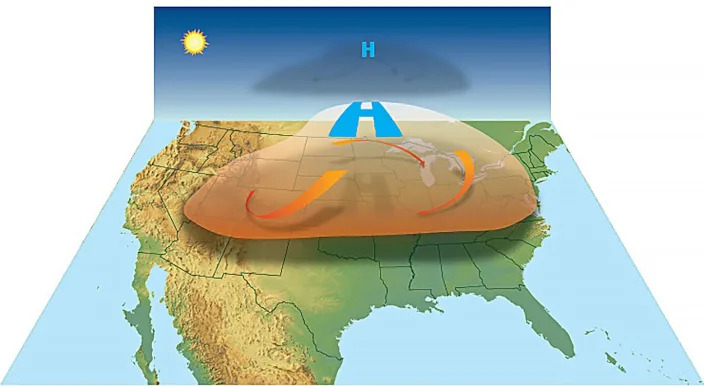
Heat domes involve high-pressure areas that trap and heat up the air below. NOAA
When the jet stream swings far to the north, air piles up and sinks. The air warms as it sinks, and the sinking air also keeps skies clear since it lowers humidity. That allows the sun to create hotter and hotter conditions near the ground.
If the air near the ground passes over mountains and descends, it can warm even more. This downslope warming played a large role in the extremely hot temperatures in the Pacific Northwest during a heat dome event in 2021, when Washington set a state record with 120 degrees Fahrenheit (49 Celsius), and temperatures reached 121 F in British Columbia in Canada, surpassing the previous Canadian record by 8 degrees F (4 C).
The human impact
Heat domes normally persist for several days in any one location, but they can last longer. They can also move, influencing neighboring areas over a week or two. The heat dome involved in the June 2022 U.S. heat wave crept eastward over time.
On rare occasions, the heat dome can be more persistent. That happened in the southern Plains in 1980, when as many as 10,000 people died during weeks of high summer heat. It also happened over much of the United States during the Dust Bowl years of the 1930s.
A heat dome can have serious impacts on people, because the stagnant weather pattern that allows it to exist usually results in weak winds and an increase in humidity. Both factors make the heat feel worse – and become more dangerous – because the human body is not cooled as much by sweating.
The heat index, a combination of heat and humidity, is often used to convey this danger by indicating what the temperature will feel like to most people. The high humidity also reduces the amount of cooling at night. Warm nights can leave people without air conditioners unable to cool off, which increases the risk of heat illnesses and deaths. With global warming, temperatures are already higher, too.
One of the worst recent examples of the impacts from a heat dome with high temperatures and humidity in the U.S. occurred in the summer of 1995, when an estimated 739 people died in the Chicago area over five days.
This article was updated June 26, 2023, with the heat dome in Texas.
This article is republished from The Conversation, a nonprofit news site dedicated to sharing ideas from academic experts.

A heat dome sat over Texas and its neighbors for more than two weeks starting in June 2023, with warm nights providing little relief. National Weather Service
A heat dome occurs when a persistent region of high pressure traps heat over an area. The heat dome can stretch over several states and linger for days to weeks, leaving the people, crops and animals below to suffer through stagnant, hot air that can feel like an oven.
Typically, heat domes are tied to the behavior of the jet stream, a band of fast winds high in the atmosphere that generally runs west to east.
Normally, the jet stream has a wavelike pattern, meandering north and then south and then north again. When these meanders in the jet stream become bigger, they move slower and can become stationary. That’s when heat domes can occur.

Heat domes involve high-pressure areas that trap and heat up the air below. NOAA
When the jet stream swings far to the north, air piles up and sinks. The air warms as it sinks, and the sinking air also keeps skies clear since it lowers humidity. That allows the sun to create hotter and hotter conditions near the ground.
If the air near the ground passes over mountains and descends, it can warm even more. This downslope warming played a large role in the extremely hot temperatures in the Pacific Northwest during a heat dome event in 2021, when Washington set a state record with 120 degrees Fahrenheit (49 Celsius), and temperatures reached 121 F in British Columbia in Canada, surpassing the previous Canadian record by 8 degrees F (4 C).
The human impact
Heat domes normally persist for several days in any one location, but they can last longer. They can also move, influencing neighboring areas over a week or two. The heat dome involved in the June 2022 U.S. heat wave crept eastward over time.
On rare occasions, the heat dome can be more persistent. That happened in the southern Plains in 1980, when as many as 10,000 people died during weeks of high summer heat. It also happened over much of the United States during the Dust Bowl years of the 1930s.
A heat dome can have serious impacts on people, because the stagnant weather pattern that allows it to exist usually results in weak winds and an increase in humidity. Both factors make the heat feel worse – and become more dangerous – because the human body is not cooled as much by sweating.
The heat index, a combination of heat and humidity, is often used to convey this danger by indicating what the temperature will feel like to most people. The high humidity also reduces the amount of cooling at night. Warm nights can leave people without air conditioners unable to cool off, which increases the risk of heat illnesses and deaths. With global warming, temperatures are already higher, too.
One of the worst recent examples of the impacts from a heat dome with high temperatures and humidity in the U.S. occurred in the summer of 1995, when an estimated 739 people died in the Chicago area over five days.
This article was updated June 26, 2023, with the heat dome in Texas.
This article is republished from The Conversation, a nonprofit news site dedicated to sharing ideas from academic experts.
It was written by: William Gallus, Iowa State University.
Read more:
How hot is too hot for the human body? Our lab found heat + humidity gets dangerous faster than many people realize
If you thought this summer’s heat waves were bad, a new study has some disturbing news about dangerous heat in the future
Extreme heat + air pollution can be deadly, with the health risk together worse than either alone
William Gallus receives funding from the National Science Foundation.
Read more:
How hot is too hot for the human body? Our lab found heat + humidity gets dangerous faster than many people realize
If you thought this summer’s heat waves were bad, a new study has some disturbing news about dangerous heat in the future
Extreme heat + air pollution can be deadly, with the health risk together worse than either alone
William Gallus receives funding from the National Science Foundation.
Erin Douglas, Yuriko Schumacher and Alex Ford
Updated Tue, June 27, 2023

A dust storm blows over cotton fields ahead of a late-summer thunderstorm in Terry County in August 2022. A Texas Tribune analysis shows that extreme heat is becoming more common across Texas due to climate change, but the effects aren’t felt the same everywhere. Credit: Justin Rex for The Texas Tribune
Record-breaking heat is becoming the new normal in Texas, an analysis of temperature data by The Texas Tribune shows, as climate change steadily warms the planet and shifts the range of typical temperatures higher.
A dangerous heat wave this month has brought three weeks of 100-degree temperatures from the state’s border with Mexico all the way to the Dallas-Fort Worth area. The heat wave has shattered records and prompted excessive heat warnings across most of the state.
Such heat waves — and the record-breaking temperatures they bring — are becoming more common and severe due to climate change, scientists told the Tribune.
Over the last 10 years, there were more than 1,600 days when a heat record was matched or broken at one of 22 weather stations across Texas. That’s more than 1,000 more record-breaking days than the 561-day average at those stations in the decades prior to 2013, the Tribune’s analysis found.
Weather data shows that record-breaking cold is occurring less frequently.
Those trends are being driven by climate change, experts said, as the planet warms due to decades of human activities that have pumped huge quantities of heat-trapping greenhouse gasses into the atmosphere.
Carbon dioxide levels in the atmosphere peaked at 424 parts per million in May, continuing to reach levels that have not been recorded for millions of years, according to the National Oceanic and Atmospheric Administration.
Heat is one of the deadliest consequences of climate change. It’s already the most dangerous type of weather, typically killing more people annually than hurricanes, tornadoes or flooding. A Tribune analysis found that more than 275 people in Texas died from heat-related illness last year, a two-decade high that experts say is almost certainly an undercount.
Heat waves “are so large, they impact a huge swath of area, and they persist for so long,” said Hosmay Lopez, an oceanographer at the NOAA who has studied heat waves. “Heat has so [many] compounding negative effects on human health.”
Extreme heat is presenting new challenges for communities across the state that rely on infrastructure built for a climate of the past.
James Doss-Gollin, an assistant professor of civil and environmental engineering at Rice University who has researched adaptation to extreme weather, said the state’s electric grid and dams are two examples of infrastructure that are greatly impacted by increasing temperatures. Just a few degrees of difference, he said, can jeopardize the availability of electricity and the structural integrity of dams.
The grid, for example, is stressed by higher demand when extreme heat causes more people to crank up their air conditioning. At the same time, when high temperatures arrive earlier in the spring and last later into the fall, power plants have smaller and smaller windows to make routine repairs.
“We have a lot of infrastructure that’s very, very sensitive to small changes in the underlying climate,” Doss-Gollin said.
Many dams are small, are privately owned and were built decades ago, when extreme rainfall events like the aftermath of Hurricane Harvey in 2017 — which dumped as much as 50 inches of rain on some parts of the Gulf Coast over five days — were much less common.
“You don’t know what sort of conditions it’s designed for,” Doss-Gollin said. “It’s a huge challenge.”
But extreme heat isn’t impacting every part of Texas the same. While every county in Texas has seen an average increase in temperatures over the last decade, three areas of the state have seen the biggest jumps in record-breaking temperatures: West Texas, the Panhandle, and the Gulf.
Amarillo, for example, had 100 days of record-setting heat between 2013 and 2022 — the most recent 10 years for which data is available. That’s more than four times the number of record heat days expected for an average decade in Amarillo prior to 2013, according to the Tribune’s analysis.
El Paso saw 113 record hot days in the last decade — more than five times the expected number of records in an average decade in the state’s westernmost city.
As temperatures rise globally, places that have less rain and fewer trees to absorb excess heat are more frequently experiencing record-setting heat, experts said.
“Summers are getting drier faster in West Texas,” said John Nielsen-Gammon, Texas’ state climatologist. “That can contribute to increases in record high temperatures.”
Areas of East and North Texas close to the Louisiana and Arkansas borders, with their forests and abundant rain, have seen comparatively fewer days of record-breaking heat.
For example, in Longview, less than 50 miles west of the Louisiana border, the Tribune’s analysis shows 27 record highs were recorded, slightly below the 30 that would be expected in an average decade there. At a weather station in the Dallas-Fort Worth area, only 35 record hot days were recorded between 2013 and 2022, just slightly higher than the 29 to be expected in an average decade there, according to the Tribune’s analysis.
But Nielsen-Gammon and other climate experts cautioned that precipitation, soil moisture and vegetation can’t explain all the variation in extreme heat trends. Other factors, like whether the weather pattern La Niña or El Niño is in effect and proximity to the Gulf of Mexico can also affect the number of days with extreme heat.
Lopez, the NOAA scientists, pointed out that the rapid growth in areas like Houston and Austin could be exacerbating the urban “heat island” effect, a phenomenon in which large cities tend to see more extreme heat than rural areas as buildings, driveways and roads absorb heat. Still, it’s “virtually impossible” to find a perfect correlation between weather, climate and extremes, he said.
And, as Nielsen-Gammon pointed out, the variation among locations “could just be random.”
Nielsen-Gammon added that the relatively slow pace of warming in wetter and forested regions “is not something that is expected to continue.” In other words, scientists have projected that those ecosystem buffers will not be enough to offset climate change in the future.
Politics still play a major role in perceptions of climate change: Some studies have observed Republicans and Democrats who experience the same extreme weather event characterize the impact of climate change differently. But Jennifer Marlon, a senior research scientist at the Yale Program on Climate Change Communication, said the program’s surveys show that an increasing number of Americans believe climate change is occurring.
“More people are accepting the problem — and it is a process of acceptance for a lot of people, because originally, they were skeptical,” Marlon said.
Almost three-quarters of Americans think global warming is happening, according to a nationally representative 2023 survey conducted by Yale and George Mason University researchers, compared with 15% who think it is not. And 44% of Americans say they’ve personally experienced the effects of global warming, according to the same survey.
“The weather changes are not the same as what we’ve been seeing in the past,” Marlon said. “The heat waves are hotter, the spring [temperatures] are ending earlier, and nighttime temperatures are higher than they used to be.”
“So experience is starting to play a bigger role,” she said.
Disclosure: Rice University has been a financial supporter of The Texas Tribune, a nonprofit, nonpartisan news organization that is funded in part by donations from members, foundations and corporate sponsors. Financial supporters play no role in the Tribune's journalism. Find a complete list of them here.
Go behind the headlines with newly announced speakers at the 2023 Texas Tribune Festival, in downtown Austin from Sept. 21-23. Join them to get their take on what’s next for Texas and the nation.




